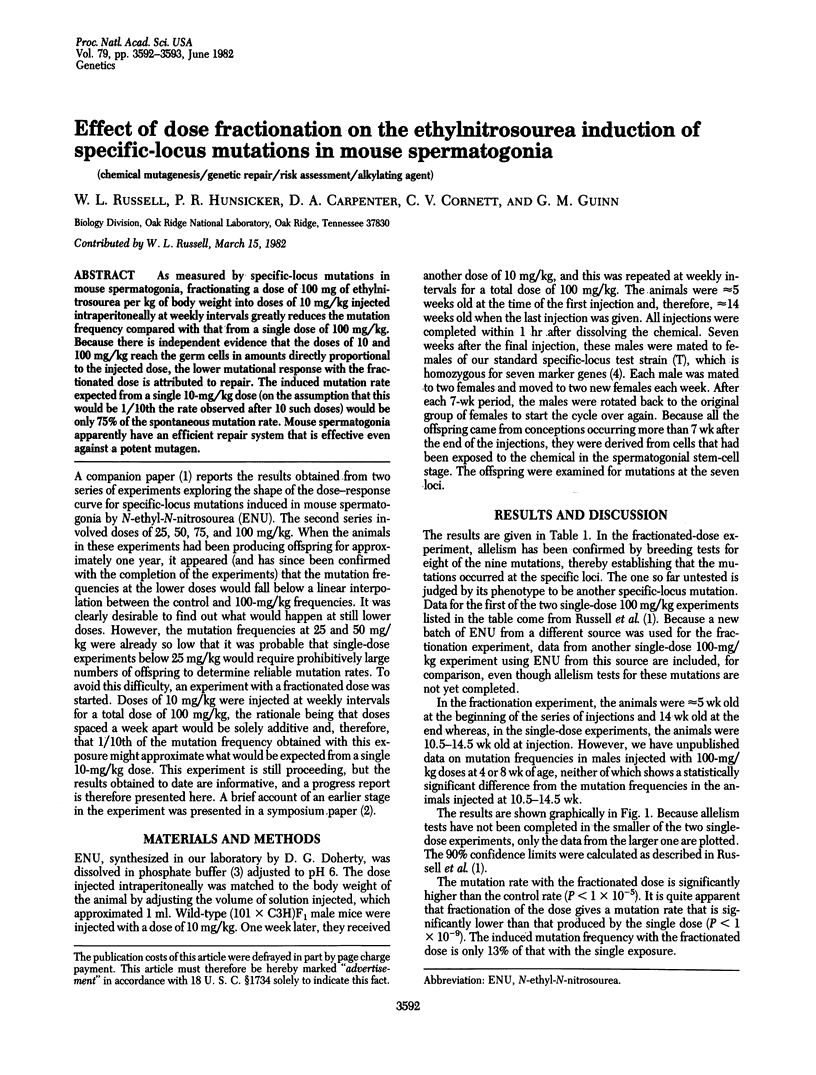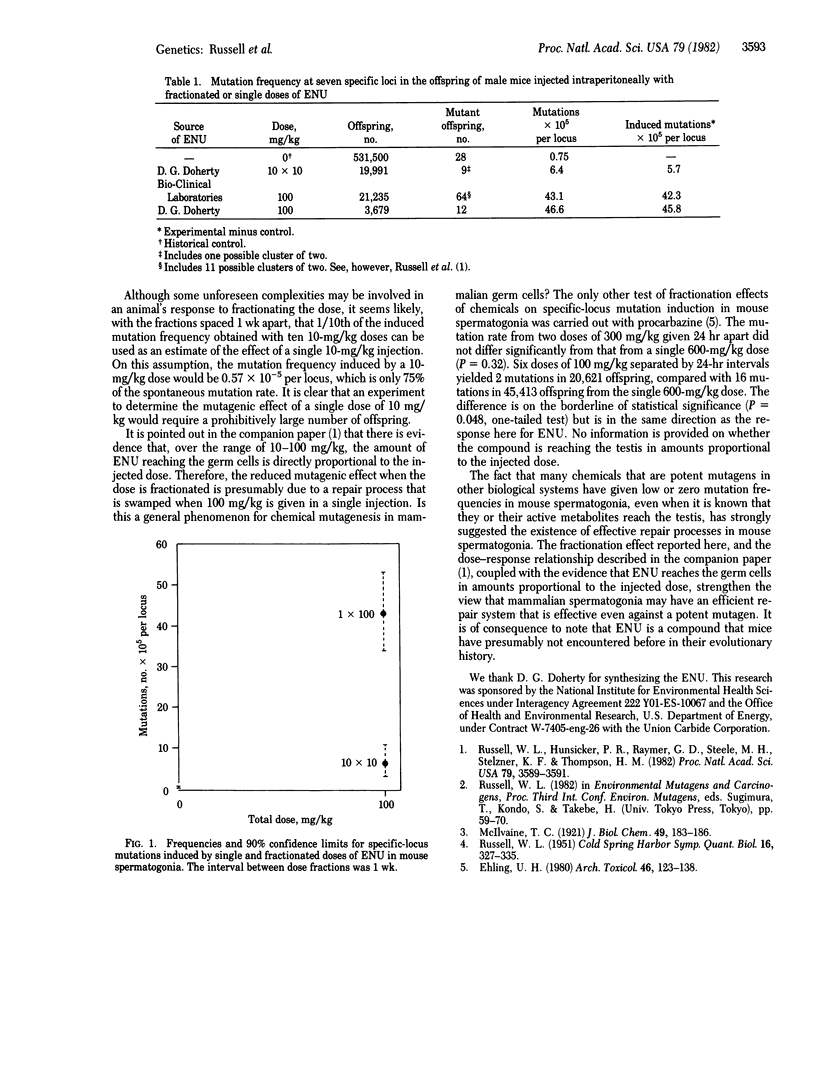Abstract
As measured by specific-locus mutations in mouse spermatogonia, fractionating a dose of 100 mg of ethylnitrosourea per kg of body weight into doses of 10 mg/kg injected intraperitoneally at weekly intervals greatly reduces the mutation frequency compared with that from a single dose of 100 mg/kg. Because there is independent evidence that the doses of 10 and 100 mg/kg reach the germ cells in amounts directly proportional to the injected dose, the lower mutational response with the fractionated dose is attributed to repair. The induced mutation rate expected from a single 10-mg/kg dose (on the assumption that this would be 1/10th the rate observed after 10 such doses) would be only 75% of the spontaneous mutation rate. Mouse spermatogonia apparently have an efficient repair system that is effective even against a potent mutagen.
Full text
PDF

Selected References
These references are in PubMed. This may not be the complete list of references from this article.
- Ehling U. H. Induction of gene mutations in germ cells of the mouse. Arch Toxicol. 1980 Nov;46(1-2):123–138. doi: 10.1007/BF00361251. [DOI] [PubMed] [Google Scholar]
- RUSSELL W. L. X-ray-induced mutations in mice. Cold Spring Harb Symp Quant Biol. 1951;16:327–336. doi: 10.1101/sqb.1951.016.01.024. [DOI] [PubMed] [Google Scholar]
- Russell W. L., Hunsicker P. R., Raymer G. D., Steele M. H., Stelzner K. F., Thompson H. M. Dose--response curve for ethylnitrosourea-induced specific-locus mutations in mouse spermatogonia. Proc Natl Acad Sci U S A. 1982 Jun;79(11):3589–3591. doi: 10.1073/pnas.79.11.3589. [DOI] [PMC free article] [PubMed] [Google Scholar]


